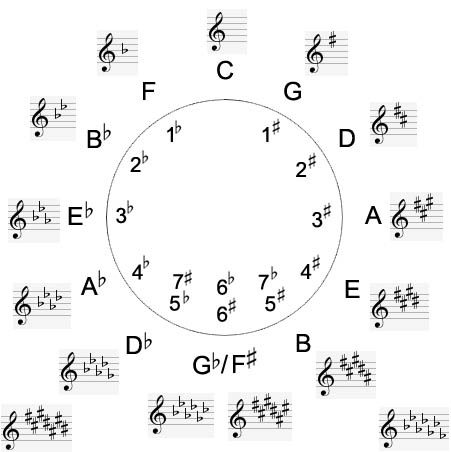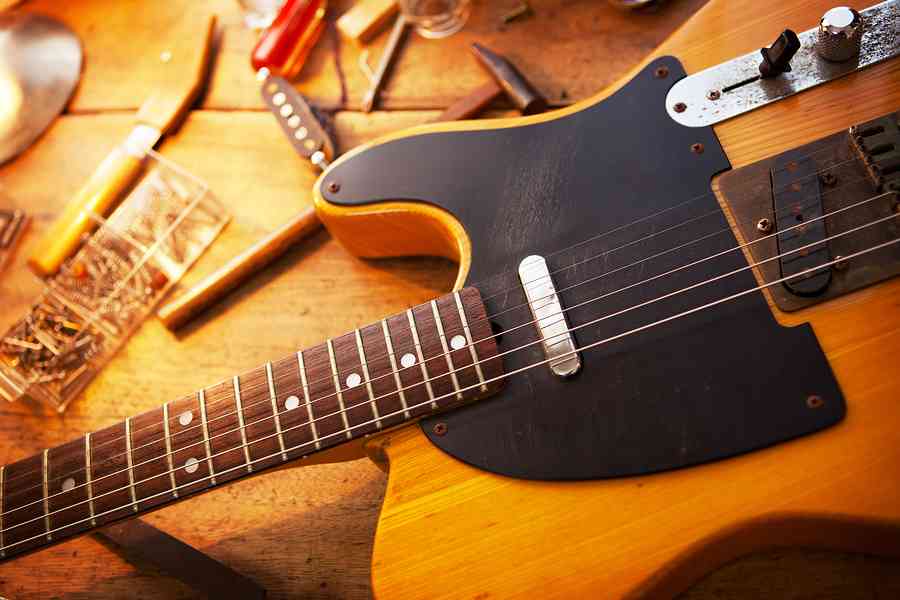May 14, 2019 by Klaus Crow
 The circle (or cycle) of fifths, also called the cycle of fourths is a diagram that gives all kind of handy information on key signatures, chords and scales in a quick and clear manner.
The circle (or cycle) of fifths, also called the cycle of fourths is a diagram that gives all kind of handy information on key signatures, chords and scales in a quick and clear manner.
Besides that, it’s an awesome practice tool to improve your guitar playing.
The circle displays all 12 notes of the chromatic scale (those are all the notes in western music) and moves clockwise in intervals of fifths.
An interval of a fifth is equal to 7 semitones or 7 frets on the guitar.
Counter-clockwise the circle moves in intervals of fourths which is equal to 5 semitones or 5 frets.
The circle of fifths is generally used for the study of classical music whereas the cycle of fourth is more often used for the analysis of jazz music, but let that not stop you because there is so much to gain from the circle for any style of music. Make it part of your knowledge of music theory. It will help you in many ways.
Let’s check it out:
Recognizing key signatures
The cycle of fifths is an easy way of finding the key signature of a song. The cycle will show you how many sharps or flats each key contains. At the top the key of C has no sharps or flats. Turn one step clockwise each time and the sharps add up. Next to C on the cycle you’ll find the key of G which has 1 sharp, then D has 2 sharps, A has 3 sharps and so on.
If you go anti-clockwise one step each time the flats up. To left of C you’ll find F which has 1 flat, then Bb has 2 flats, Eb has 3 flats, Ab has 4 flats and so on.
This is useful also and especially if you can’t read music. When you see a music score which makes no sense to you, but you see 3 sharps in the beginning of the note staff, you’ll know that the song is in the key of “A”. Continue Reading

 Okay, you know your
Okay, you know your  The beauty of guitar masterclasses is that they always give you new insights and make you aware of the infinite possibilities on the guitar.
The beauty of guitar masterclasses is that they always give you new insights and make you aware of the infinite possibilities on the guitar.